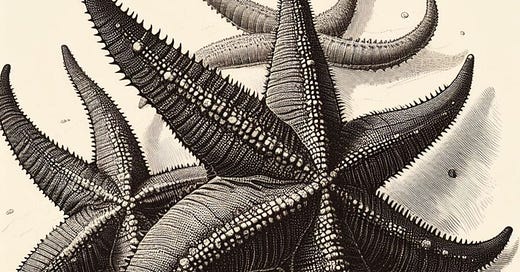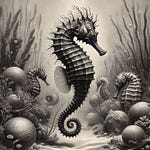Hello again, and welcome back!
I bet you weren’t expecting one of the “four horsemen of New Atheism” (a) to have come up with the most famous way of measuring “theory of mind” and (b) to appear on a neurodivergent philosophy podcast to discuss his smoldering hatred of the very concept of “theory of mind”—but here we are.
You can find a nice (not Substack-generated) transcript of episode 2, as well as a music-free remix, here.
“An Intellectualist Fossil”
In 1964, Daniel Dennett (he/him) watched an Italian puppet show. And that puppet show gave him two ideas.
Idea #1: scientists could (sort of, maybe) measure “theory of mind” by testing whether someone can track other people’s false beliefs. This idea led to the development of the most well-known way of measuring “theory of mind”: false belief tests.
Idea #2: false belief tests should not rely on verbal questions, because that would make the test results impossible to interpret. Instead, false belief tests should look for certain types of spontaneous behavior, like laughter.
Unfortunately, psychologists ran with Dennett’s first idea, while ignoring his second idea. And thus the ultimate autism mind-myth was born.
Topics Discussed
The general concept of theory of mind (00:38)
The theory of mind deficit view of autism (02:08)
Joanna’s encounter with the theory of mind deficit view of autism “in the wild” (i.e., at a philosophy conference) (05:32)
How Daniel Dennett came up with the idea of using false belief tests to measure theory of mind (08:59)
Dennett goes to the Punch and Judy show (10:38)
Dennett writes his commentary “Beliefs about Beliefs” (13:06)
Heinz Wimmer and Josef Perner use Dennett’s idea to develop a false belief test for young children (14:38)
“Sally-Anne” false belief tests (15:11)
Psychologists’ big mistake when deploying false belief tests to measure theory of mind (15:54)
Dennett’s alternative to “theory of mind”: the intentional stance (18:05)
On Dennett’s view, maybe some autistic people “do” theory of mind more than non-autistic people? (21:58)
Different strategies for perspective-taking, and their respective trade-offs (24:33)
Baron-Cohen, Frith, and Leslie’s paper, “Does the autistic child have theory of mind?” (26:55)
Sources Mentioned
Daniel Dennett, The Intentional Stance (MIT Press, 1989) and Breaking the Spell (Penguin, 2006).
David Premack and Guy Woodruff, “Does the chimpanzee have a theory of mind?” The Behavioral and Brain Sciences, Vol. 1, Issue 4 (1978), 515-526. https://carta.anthropogeny.org/sites/default/files/file_fields/event/premack_and_woodruff_1978.pdf
Daniel Dennett, “Beliefs about Beliefs,” Behavioral and Brain Sciences, Vol. 1, Issue 4 (1978), 568-570. https://dl.tufts.edu/concern/pdfs/r207v163n
Jon Thursby's Punch and Judy Show (Punch and Judy Inc: https://punchandjudyinc.co.uk/)
Heinz Wimmer and Josef Perner, “Beliefs about beliefs: Representation and constraining function of wrong beliefs in young children's understanding of deception,” Cognition, Vol. 13, Issue 1 (1983), 103-128. https://psycnet.apa.org/record/1983-27705-001
Temple Grandin describes some of her experiences with perspective-taking (Dennett mentions her first-person account at 22:52): https://www.iidc.indiana.edu/irca/articles/social-problems-understanding-emotions-and-developing-talents.html
Simon Baron-Cohen, Uta Frith, and Alan Leslie, “Does the autistic child have theory of mind?” Cognition, Vol. 21, Issue 1 (1985), 36-47. https://docs.autismresearchcentre.com/papers/1985_BC_etal_ASChildTheoryOfMind.pdf
Credits
Hosting, Research, Fact-Checking, Script-Editing: Amelia Hicks and Joanna Lawson
Guest: Daniel Dennett
Music and Audio Production: Amelia Hicks
Additional Voicework: Rach Cosker-Rowland
Thank-Yous
Thank you to Rach Cosker-Rowland for lending us her voice to read some pieces of text for us! We’re also grateful for her editorial advice.
Thanks to Daniel Dennett for speaking with us about the history of theory of mind. You can read more about the intentional stance in his book titled the Intentional Stance, as well as his book Breaking the Spell.
Big thanks to Jon Thursby, a second-generation Punch and Judy man, who was the puppeteer you heard in the crocodile clip from a Punch and Judy show. He runs Punch and Judy Inc, and performs Punch and Judy shows across the UK and Europe.
And thanks to the Marc Sanders Foundation and the Templeton Foundation for their support of the show.












Share this post